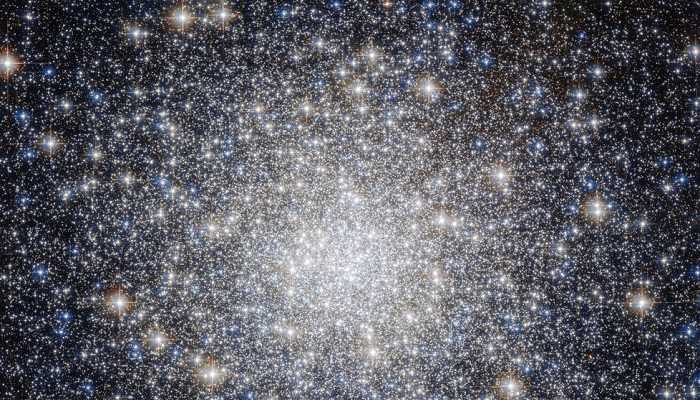Space sounds: Astronomers spooked after recording eerie song of twinkling stars
Though stars may appear like distant glistening pearls in the giant clam of the night sky, have you ever wondered what they sound like?
July 28, 2023

Scientists have found a novel approach to comprehending the waves of energy coursing through the cores of massive stars, and the results are hauntingly captivating, akin to a nursery rhyme turned spooky melody, BBC’s Science Focus reported.
Though stars may appear like glistening distant pearls in the giant clam of the night sky, have you ever wondered what they sound like? Astronomers have ingeniously devised a method to decipher the causes behind the flickering of starlight, and they've transformed it into an audible experience for us to listen to.
Unlike the twinkling we observe from Earth due to atmospheric effects, this celestial song reveals the flickering arising from the movements within the cores of stars.
Published in the journal Nature Astronomy, these findings offer valuable insights into the inner workings of massive stars—those larger than 1.2 times the size of our Sun.
This understanding extends to the processes involved in the formation and evolution of stars and galaxies, as well as the creation of essential elements like oxygen, on which we depend.
The twinkling phenomenon observed in massive stars stems from gas waves rippling across their surfaces.
These gas waves originate from the turbulent and chaotic convection zones located at the centres of these stars, where gases collide and expel heat outward.
These waves, in turn, cause the starlight to oscillate between brightness and dimness, thus creating a captivating twinkling effect.
To provide a unique glimpse into this cosmic symphony, the team of scientists from Northwestern University in the US has cleverly converted these celestial waves into audio waves, transforming the twinkling of stars into an enchanting auditory experience.
“This study provides an out of the box method to search for stars’ signatures that are largely masked and are invisible even to more powerful telescopes and to the human eye,” sonification astronomer Wanda Díaz-Merced, who was not involved in the study, told BBC Science Focus. “I congratulate the team!”
They began producing the first-ever 3D simulations of the energy that ripples from a massive star’s core to its outer surface. These simulations showed how these waves were expected to look if viewed through a powerful telescope.
“Motions in the cores of stars launch waves like those on the ocean,” said Northwestern’s Evan Anders, who led the study. “When the waves arrive at the star’s surface, they make it twinkle in a way that astronomers may be able to observe.”
Anders and his team took their simulations to the next level by developing sophisticated computer models. Utilising these models, they calculated the degree of twinkling caused by various frequencies and intensities of the waves within stars. To illustrate the motion of these waves, they converted their calculations into an audio track.
However, a fascinating challenge arose when attempting to create the audio representation. The waves' frequencies were beyond the range of human hearing, prompting the researchers to increase the frequencies to make them audible to our ears.
This ingenious 'translation' allowed them to combine two distinct processes that operate on vastly different timescales: the initial turbulence of gas collisions, which occurs over a matter of weeks, and the subsequent reverberation of waves that can last for hundreds of thousands of years.
Inspiration struck the team when they realised that musical sounds share a similarity with their research subject.
Just like sounds are first generated by an instrument and then resonate throughout a room, the waves in stars originate from turbulent gas movements at their cores and ripple out to their surfaces.
By transforming their calculations into an audio track, the team could visualize the progression of the waves from the star's core to its surface. The resulting sound transitioned from clarity to an eerie quality, representing the wave's journey.
Curious about the reverse process, the team decided to feed 'human' songs into their computer model to observe how the sound waves would behave when passing through a star's core and travelling outward.
They chose fitting songs for this experiment, including "Twinkle Twinkle Little Star" and Gustav Holst's orchestral suite "The Planets." The outcome was both beautiful and haunting, as the melodies transformed within the star's environment.
Through their innovative use of music and computer modelling, the scientists gained a deeper understanding of the intricate processes occurring inside massive stars, adding a harmonious touch to the mysteries of the cosmos.
“Stars get a little brighter or a little dimmer depending on various things happening dynamically inside the star,” Anders said.
“The twinkling that these waves cause is extremely subtle, and our eyes are not sensitive enough to see it. But powerful future telescopes may be able to detect it.”
The work will help to direct these future telescopes to the inner regions of stars where heavier elements are forged.









